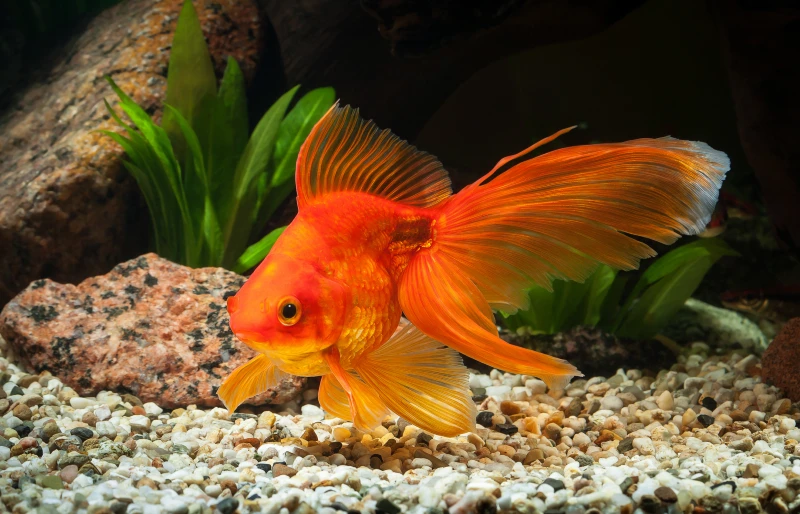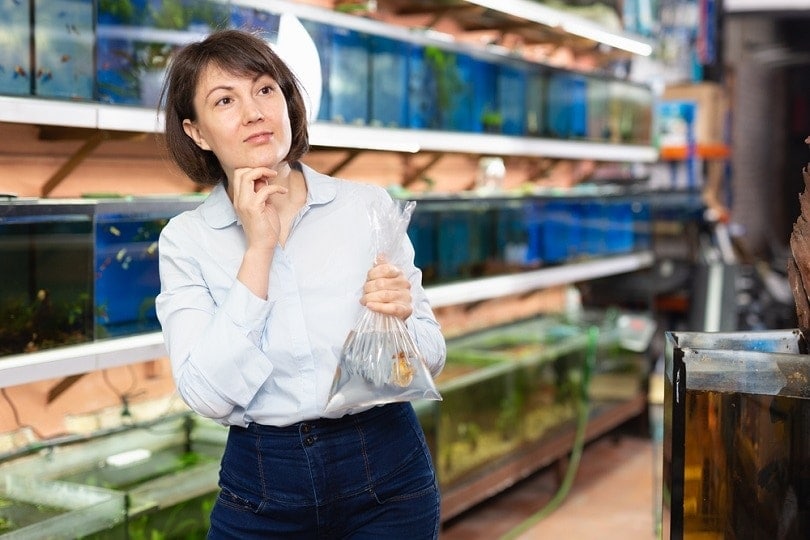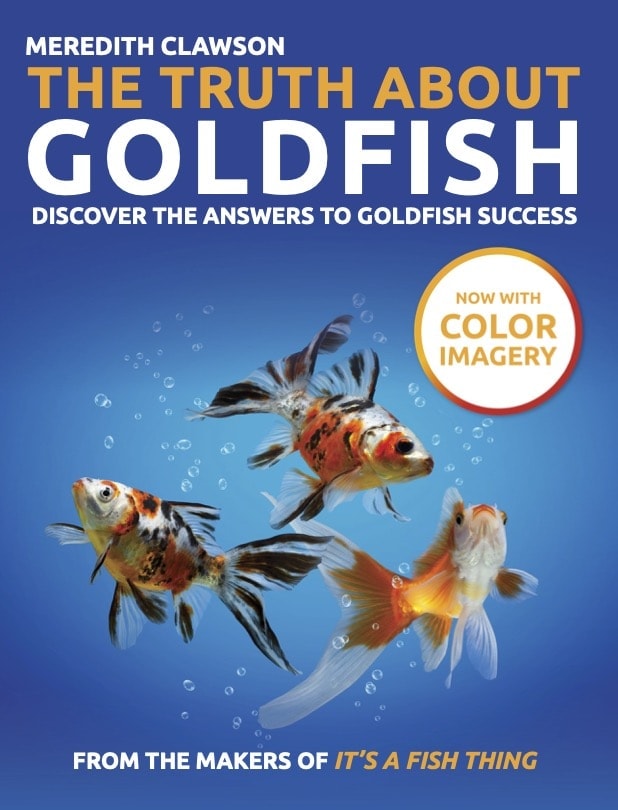5 Basics of Nano Goldfish Keeping (Vet Answer)
By Dr. Luqman Javed, DVM (Vet)
Updated on

Click to Skip Ahead
“Nano tank” is a term given for small aquariums that are under 5 gallons in size, though some people also consider aquariums under 10 gallons as a nano tank. When it comes to goldfish, large aquariums are recommended, even for the fancy variants. A 30- or 40-gallon aquarium is advised for a pair of fancy goldfish. This begs the question: Why would a nano goldfish tank even be appropriate for a goldfish?
The difficulty of maintaining a nano aquarium for a goldfish is undeniable; however, there are times when a nano aquarium might be useful for goldfish.
In this article, we’ll explore scenarios where this is the case and provide recommendations on the basics of nano goldfish tanks.
Goldfish Nano Tank Uses
At a glance, a nano tank seems counterintuitive to goldfish care. Their high bio-load, large adult sizes, and activity levels render most nano tanks impractical for long-term housing. However, nano tanks can be useful for the goldfish keeper in many situations.
1. Nursery
This is perhaps the most useful aspect of a nano goldfish tank. They are ideal for housing goldfish babies, otherwise known as fry. Goldfish cannot be housed with their parents as these fish have no parental instincts whatsoever; they will even eat their eggs if given the opportunity.
When goldfish are born, they are exceptionally small. They are 3/16″ (4.5mm) in length. This is less than half a centimeter in size! Even when they are free-swimming, they are relatively small, at 7/32″ (5mm) in body length.
This is where nano tanks come in. They are excellent nurseries for goldfish fry, and because of their size, they can easily be stacked or placed near each other; this helps when it comes to feeding, rehoming, and sorting your goldfish fry around as they grow.
In addition, there are other reasons why you shouldn’t house them in a tank that’s too large:
- It’s more difficult to monitor small groups of goldfish fry in a very large tank.
- The large open spaces in a large aquarium will likely scare your fry into hiding, as they instinctively fear large open swimming spaces (because a predator might be lurking around).
- Fry have to swim greater distances in a larger aquarium to acquire food, which means they spend more energy to find more; therefore, their growth is slower in larger aquariums.
- The built-in filters in large tanks are often too strong for fry to cope with. The wrong filter inlet may even suck away some fry and trap them in the filter itself.
- Smaller volumes of water changes are generally more convenient and less stressful for newborn fish.

2. Hospital
If you’ve ever been admitted to a hospital, you might recall being placed in a room with a comfortable bed for closer monitoring and treatment either before a procedure or for recovery from an ailment or illness. A nano tank can serve a similar purpose for your goldfish, as it can serve as a hospital tank for a sick individual.
Temporarily placing sick goldfish in the nano tank will help you monitor them closely as they recover. Your goldfish may also appreciate the opportunity to rest and recover in peace in a small space rather than finding a hiding spot in a large aquarium where their conspecifics might disturb them.
In addition, because sick goldfish are often weak, they sometimes don’t get their fair share during feeding time when housed with other fish. In a nano tank, they can eat at their pace without the risk of a greedy tank mate stealing their morsel. Since nutrition is a big part of recovery from a disease, this is a great perk of a nano tank.
Finally, many aquarium medicines come in a liquid form that you have to dilute according to the water volume in your tank. In a nano tank, you would use less medicine. This would save you money and product in the long run.
3. Transport
Though plastic bags are the preferred choice when transporting fish, some goldfish may just grow far too big for a plastic bag. Finding a bag large enough to hold a 12-inch individual for a trip is hard. In such a circumstance, a nano tank might be a better transport option for your fish. Please be mindful that because 1 gallon (3.8 L) of water weighs 8.3 pounds (3.8 kilograms), even a small aquarium can be extremely heavy relative to its size.
For especially long trips, a nano tank with a lid might be a better option than a plastic bag because it could be easier to aerate for such a journey. A small hole can be drilled into the lid to pass an air tube through, which can then be attached to an airstone in the water of the aquarium. Outside the tank, the tube can be attached to an air pump which can be powered up by your car or a spare battery. It’s also easier to perform small water changes in a nano tank along your trip because if a plastic bag is sealed with oxygen, it will instantly lose the oxygen once you open the bag for a water change.

4. Farm
Finally, even when not used to house goldfish, nano tanks can be a great addition to your aquariums as you can use them to grow food for your goldfish. This can be in plants or any live food you prepare for your pets. Propagating live feed at home is often more cost-effective in the long run and has the added benefit of controlling what you feed the food before you provide it to your fish. Store-bought live food might not be nutritious and, at times, carry pathogens you wouldn’t want in your aquarium.
The 5 Basics of Nano Tanks
Though nano tanks do have their uses, it’s important to be mindful of some basic rules when using them. The basic rules of nano tanks can be summarized as follows.
1. Temporary Housing Only
Whenever you use a nano tank, it’s important to remember that they should only be considered temporary housing for your goldfish. They aren’t suitable as long-term housing options. As long as you use them wisely and for their intended purpose, they’re sure to be a fantastic addition to your aquariums.
2. Quality Is Key
Though nano tanks are temporary holding units for goldfish, they still require water quality checks and should be cycled before use. Because they hold less water than a larger aquarium would, they would pose a bigger risk for goldfish if they aren’t cycled. Always check the quality of your aquarium’s water before adding fish in for temporary housing.
Important: the bacteria responsible for the nitrogen cycle in your aquarium need a continuous source of nitrogen to survive. In an empty aquarium, they will quickly die out. If you have a nano tank, you should either always have it cycling (by using store-bought ammonia and having the filter continuously running). Alternatively, you can perform a “quick cycle” on the tank when placing a fish inside by transporting some filter media from an established, disease-free aquarium to the nano tank before adding your fish in.
If you're terrified of passing on any bugs your new fish may have to your entire aquarium, or just want to be sure you do the quarantine process right, we recommend you read our best-selling book The Truth About Goldfish before you put them in.
It has detailed instructions on a seamless quarantining process and so much more. Your fish will thank you!
3. Water Changes
Be especially careful when it comes to water changes for your nano tank. Due to their smaller size, they need more frequent maintenance in the form of a partial water change than larger aquariums.
4. Filter Choice
As nano tanks may house individuals that are unwell or very young, be mindful about which filter you choose for your tank. A sponge filter is not something people usually associate with goldfish, but it might be an excellent choice for a nano goldfish tank. For baby goldfish, a sponge filter is considered almost mandatory, as it prevents them from being drawn into the filter’s inlet. Fish that are unwell might not have the strength to swim against a powerful filter and might be more comfortable with a gentle sponge filter instead.
If you don’t use a sponge filter and use your nano tank as a hospital, be careful about any carbon (such as charcoal) in your filter’s compartments. Carbon will neutralize most medicines used in aquariums. It should be removed prior to medicating your fish.

5. Accessories
Even though they are temporary houses for goldfish, nano tanks should contain enrichment like plants and decor. These may also offer your fish a hiding or sleeping spot and, in the case of live plants, help with water quality control as well.
A lid is a necessity for a goldfish nano tank, as many goldfish can easily jump. This is common with some sick goldfish, as they have periods of erratic swimming (known as flashing), where they tend to aimlessly dart around the tank and, at times, jump if a parasite is causing high levels of discomfort.
Though tanks can be aerated without air stones, it might be useful to have one in your nano goldfish tank to provide additional aeration and gas exchange.
Conclusion
Though most of the fish-keeping community would rightfully advise against keeping goldfish in a nano tank on a long-term basis, this doesn’t mean they are not a useful addition to your fish-keeping kit. There are several uses for a nano tank, and you might find that they often come in handy when keeping pet goldfish. In this article, we’ve covered their fundamental uses, as well as some key basics with regard to their proper usage.
We hope you’ve found this article a useful resource. As always, if you have questions about fish’s health or well-being, you should reach out to your aquatic veterinarian for further information and advice.
Featured Image Credit: dien, Shutterstock















